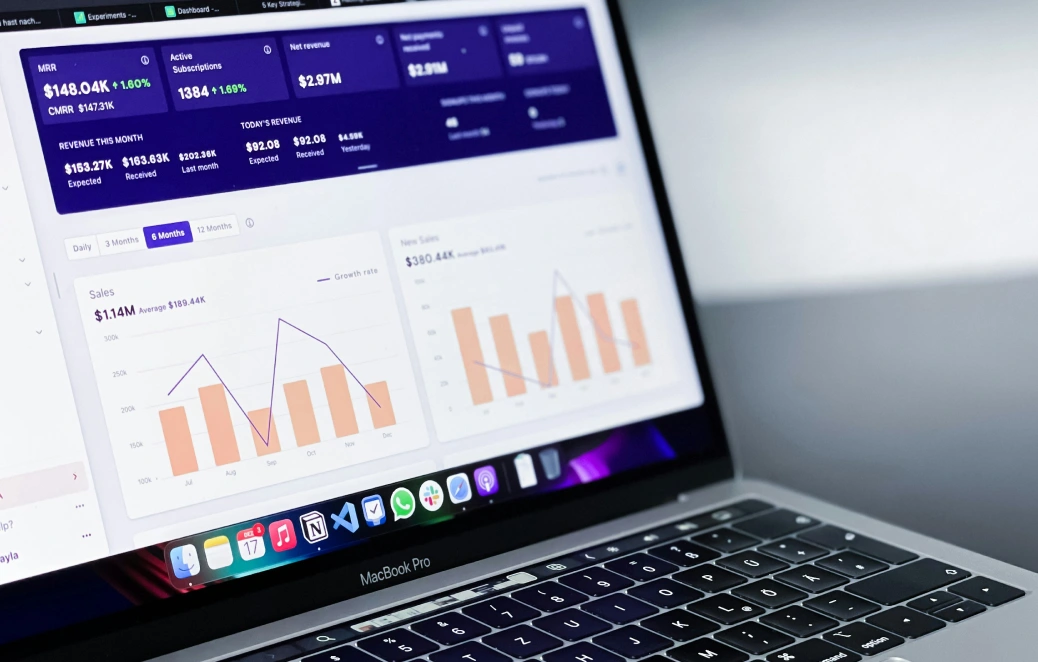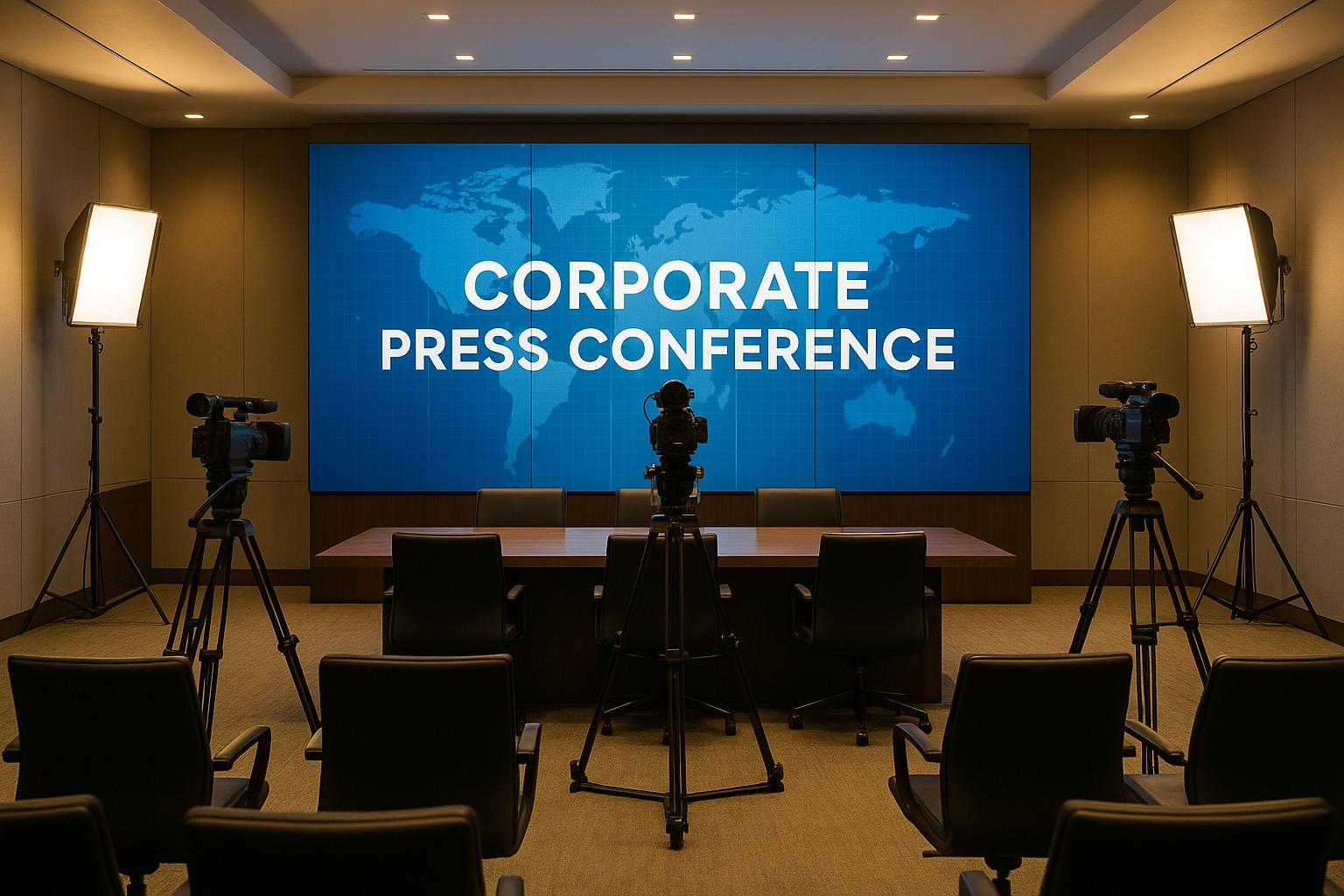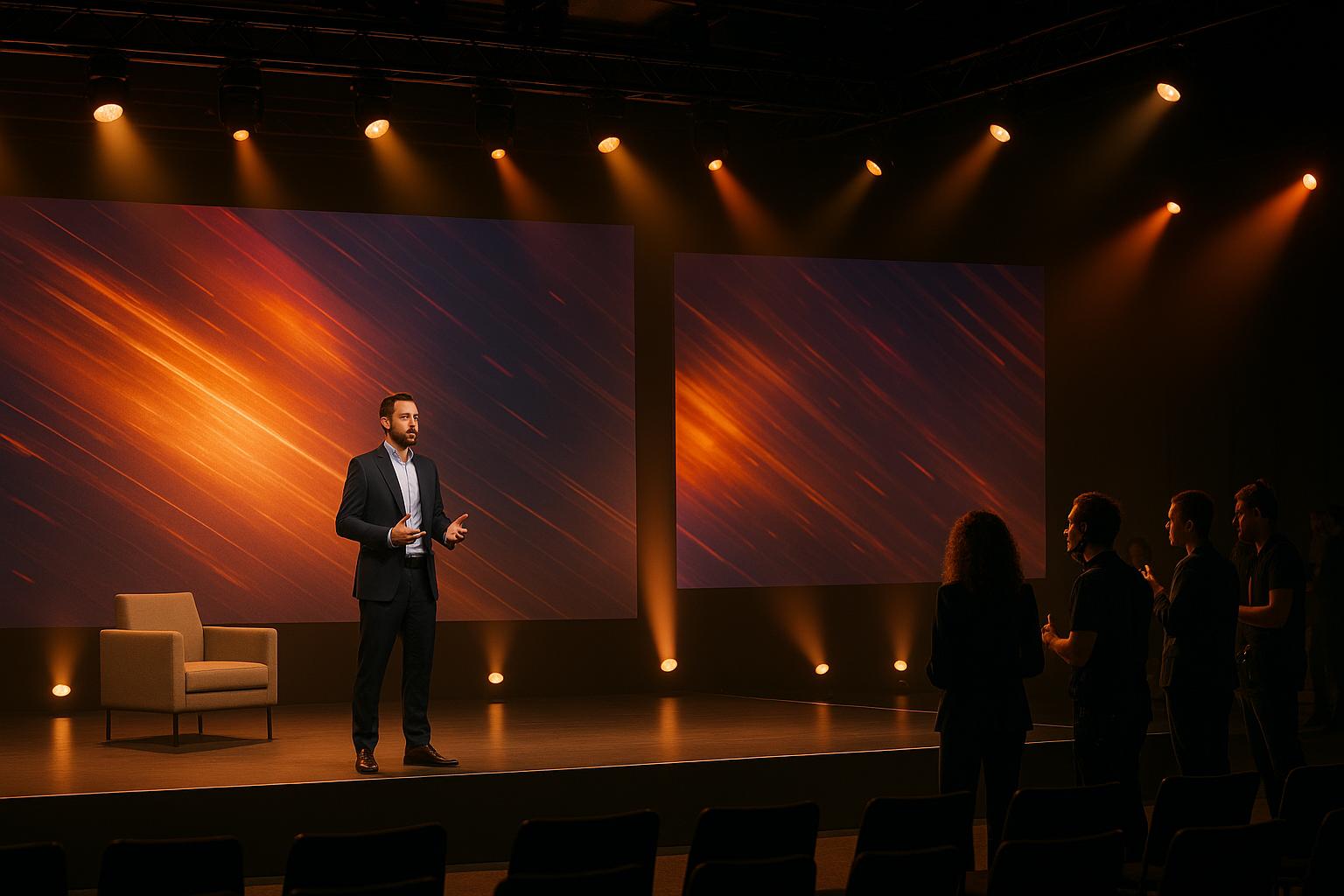5 Tips To Plan A Franchise Meeting For Multiple Regions

Chief Executive Officer

Planning a franchise meeting across multiple regions can be tricky, but it doesn’t have to be overwhelming. Here’s a quick summary of how to make it work:
- Pick accessible venues: Choose locations near major airports and transport hubs to make travel easier and reduce costs.
- Use hybrid technology: Combine in-person and virtual options to increase participation without requiring everyone to travel.
- Tailor content for each region: Create presentations that address local market needs, preferences, and challenges.
- Streamline communication: Use centralized tools like Slack or Asana to coordinate tasks, share updates, and keep everyone aligned.
- Plan logistics carefully: Ensure consistent audiovisual setups, manage budgets for different locations, and prepare backup plans for unexpected issues.
Tips For Planning Your Annual Franchise Conferences
Tip 1: Choose Central and Accessible Venues
Picking the right venue can make or break a multi-regional franchise meeting. When attendees are flying in from various states, accessibility becomes a major concern. Opting for a location near major airports and transportation hubs can ease travel, save on costs, and boost attendance.
Why a Central Location Matters
A venue close to major airports and transportation hubs makes it far easier for attendees to get there without unnecessary hassle. This kind of convenience ensures franchisees can quickly transition from their flights to the meeting space without delays.
Take Dallas, for instance. It’s a key transportation hub with excellent connectivity, making it a practical choice for travelers from all over the country. Plus, with hotel prices and airfare expected to rise by 2.5% in 2025, choosing a central and accessible location can help cut down on overall costs. Additionally, venues near highways, train stations, or shuttle services reduce the risk of delays and missed connections, ensuring smooth arrivals.
Features to Look for in a Venue
Look for venues that are well-connected by public transit and offer walkable access to nearby amenities. This reduces the need for extra transportation, saving both time and money for attendees. Venues with nearby accommodations - or better yet, hotels directly connected to the meeting space - add another layer of convenience. Connected hotels often provide group discounts, which can help keep your event budget in check.
When narrowing down your options, weigh the travel distance against the venue’s appeal. Also, consider practical resources like convention centers, high-quality hotels, and nearby dining options. For example, cities like Las Vegas offer numerous daily direct flights, while San Diego’s airport provides easy access to local attractions, restaurants, and hotels.
Tip 2: Use Virtual and Hybrid Event Technology
Hybrid events offer a practical way to overcome regional challenges, making it easier to connect franchisees without the need for extensive travel or juggling schedules. By blending in-person and virtual participation, these events combine the personal touch of face-to-face interaction with the accessibility of online engagement. This approach not only widens your reach but also simplifies participation for attendees.
Benefits of Hybrid Formats
One of the toughest hurdles in organizing multi-regional franchise meetings is gathering everyone in one place. Hybrid events solve this by allowing remote participants to join live sessions, ask questions in real time, and access the same materials as those attending in person. This setup eases logistical challenges and encourages higher attendance. Plus, virtual platforms often make people feel more at ease, which can lead to livelier and more interactive discussions.
Another perk of hybrid formats is their flexibility. Key presentations can be recorded and shared with franchisees in different time zones or those who couldn’t attend live. This ensures that everyone has access to important content whenever it’s most convenient for them.
Technology Tools for Implementation
The success of your hybrid event hinges on the quality of your audiovisual setup. Poor sound or glitchy video can alienate remote attendees and make them feel disconnected. Investing in professional live-streaming equipment ensures that everyone can clearly see and hear the presenters, fostering a sense of inclusion.
Interactive tools are essential for bridging the gap between in-person and virtual participants. Platforms with features like Q&A sessions allow both groups to submit questions, creating a more inclusive and collaborative environment. Audience engagement software, offering live polls, breakout rooms, and chat functions, helps keep virtual attendees actively involved. Some tools even let participants "raise their hand" digitally, making it easier for moderators to manage input from everyone.
When planning your setup, prioritize reliability. A strong internet connection is non-negotiable, so have backup options ready and test all equipment thoroughly before the event begins. Assign a dedicated tech support team to handle the virtual components, ensuring everything runs smoothly.
Don’t overlook the importance of visuals and sound. Multiple camera angles can make virtual attendees feel more connected to the room, while professional lighting ensures presenters look polished on screen. Audio mixing is equally critical, especially when juggling microphones for speakers, audience questions, and remote participants. A well-coordinated setup can make all the difference in creating a seamless experience for everyone involved.
Tip 3: Customize Content for Regional Audiences
A one-size-fits-all presentation often misses the mark when franchisees operate in vastly different markets. Regional nuances - like local consumer preferences, economic conditions, and regulations - demand tailored content that delivers actionable, relevant insights for every attendee.
It’s important to recognize that strategies successful in one area might fall flat elsewhere. Variations in demographics, spending habits, and even cultural norms shape how consumers behave. Your meeting content should reflect these differences, offering region-specific solutions instead of a blanket approach.
Regional Market Data
Start by gathering detailed market data. Use tools like loyalty programs, surveys, and direct customer feedback to collect first-party insights. Pair this with CRM analytics to track sales trends, customer retention, and seasonal buying patterns. External resources, such as industry reports and demographic studies, can fill in the gaps and provide a broader perspective. Together, these data points help you craft content that resonates locally. In fact, personalized content can drive up to six times higher transaction rates.
Keep an eye on how current economic conditions are impacting consumer behavior. For instance, inflation and economic uncertainty are reshaping purchasing decisions, making it harder to convert customers across different regions. Emerging trends, such as the rise of app-based businesses or virtual reality experiences, also vary by location. Similarly, while eco-consciousness is growing everywhere, some regions may prioritize sustainability more than others.
Using this data, you can fine-tune your messaging and visuals to speak directly to each audience’s unique needs and opportunities.
Adapting Presentations
Once you’ve collected robust regional insights, the next step is to adapt your presentations to reflect them. This isn’t just about tweaking a few slides - it’s about rethinking your messaging, examples, and visuals to connect with your audience on a deeper level.
For example, urban franchisees may benefit more from strategies focused on digital advertising, while rural operators might find community engagement tactics more effective. Adjust your messaging framework to reflect these differences, considering regional economic factors, cultural preferences, and demographic trends.
Incorporate diverse case studies that reflect the realities of different markets. Highlight success stories from a variety of regions and market sizes to help attendees see how strategies can be applied in their own contexts.
Visuals matter, too. Use images and graphics that reflect the diversity of your markets, avoiding generic or mismatched visuals. Region-specific slides can effectively showcase local opportunities, competitive landscapes, and even regulatory challenges.
Speaking of regulations, compliance is another area where customization is key. Different states and regions have unique requirements when it comes to employment laws, health regulations, and business practices. Collaborate with local legal and compliance experts to ensure your presentations address these specifics.
Finally, don’t underestimate the importance of cultural and linguistic sensitivity. Regional expressions, business norms, and communication styles can vary significantly. Aligning your tone and style with local expectations will make your content more relatable and effective.
With tools like AI, creating personalized content has never been easier. Franchisees can now access tailored offers and strategies that fit their market conditions, helping them implement changes more effectively. By customizing your content, you empower your audience to succeed in their unique environments.
sbb-itb-ae35a94
Tip 4: Improve Coordination and Communication
Effective coordination is the backbone of multi-regional franchise meetings. Without proper systems in place, even the best-planned events can quickly descend into disarray. The challenge lies in ensuring that every participant - from franchisees in California to vendors in New York - stays aligned throughout the planning process.
Planning events across multiple regions comes with its own set of complexities: juggling time zones, managing suppliers, coordinating speaker schedules, and ensuring consistent messaging. Relying solely on email threads or phone calls isn’t enough. You need a clear communication strategy that minimizes confusion and keeps the event on track.
Central Communication Platforms
The first step toward smooth coordination is selecting the right communication platform. A centralized hub is essential for sharing real-time updates, managing documents, and tracking progress without drowning in endless email chains.
Project management tools like Monday.com or Asana can help you organize every aspect of a complex event. They allow you to create detailed timelines, assign tasks to specific team members, and monitor progress across all regions in one place. Meanwhile, tools like Slack or Microsoft Teams are ideal for real-time conversations, with dedicated channels to handle different aspects of the event.
For document sharing, platforms like Google Workspace or SharePoint let multiple team members collaborate on presentations, budgets, and other planning documents in real time. Features like automatic version control ensure everyone is working with the latest updates. For example, if your team on the West Coast updates venue specifications at 6:00 PM Pacific Time, your East Coast vendors can access those changes first thing the next morning.
Consider using an all-in-one event management system that combines project management, communication, and document sharing. Many of these platforms also include tools for registration management, vendor coordination, and budget tracking, streamlining your entire process into a single dashboard.
Consistent Messaging
Keeping your messaging consistent across regions is critical, but it’s not as simple as sending out identical emails to everyone. Regional differences - like cultural norms, business practices, and communication preferences - can influence how messages are received.
Start by developing a communication framework that outlines your key messages, brand guidelines, and tone of voice for all event-related communications. This framework should provide enough structure to maintain consistency while allowing room for regional customization.
Standardized templates can save time and ensure uniformity. Use them for common communications like speaker confirmations, vendor agreements, and attendee updates. These templates should include your branding, key messaging points, and any required legal language, but they should also allow for adjustments based on regional needs.
Regular coordination calls with regional leaders are another key element. These calls keep everyone aligned on the event’s objectives and their specific roles. To accommodate different time zones, rotate the meeting times fairly. Use these calls to address regional concerns and explain how local adaptations fit into the larger event strategy.
Set clear escalation procedures for handling changes to budgets, venues, or speaker schedules. Define response timeframes for different types of requests, keeping time zone differences in mind to avoid delays.
Appoint regional communication liaisons who can act as the bridge between your central planning team and local stakeholders. These individuals should have a clear understanding of both the event’s overarching goals and their region’s unique needs. This role helps prevent miscommunication and ensures smoother coordination.
Standardized documentation practices are also essential. Meeting notes, change orders, and approvals should follow a consistent format across all regions. This makes it easier to track decisions and maintain accountability.
Finally, establish feedback loops that enable regional teams to share insights and concerns with the central planning team. This two-way communication helps you identify potential issues early and ensures that regional perspectives are considered in your overall planning.
When your communication strategy is solid, it not only simplifies logistics but also strengthens the unified vision for your multi-regional franchise meetings. This allows franchisees to focus on the event’s content and networking opportunities, knowing that every logistical detail has been expertly handled behind the scenes.
Tip 5: Manage Event Production and Logistics
The technical and logistical planning behind a multi-regional meeting can make or break its success. From managing audiovisual setups to sticking to a budget, production plays a crucial role in ensuring your event runs smoothly. When done right, it creates a seamless experience that supports your franchisees and their engagement.
Unlike single-location events, multi-regional meetings come with unique challenges. You might need to juggle equipment shipments across state lines, coordinate with multiple vendors, and maintain consistent standards across all locations. A technical hiccup in one location could disrupt presentations for franchisees nationwide.
Technical Production Requirements
A strong audiovisual setup is non-negotiable for multi-regional events, and the logistical complexity only grows with live streams, varied presentation formats, and inter-location connectivity.
Start by creating a detailed list of technical requirements for projectors, sound systems, screens, lighting, and recording equipment. This avoids the risk of presentations working well in one city but falling short in another due to equipment differences.
For hybrid events, invest in high-quality streaming gear. Skip the basic webcams and microphones. Instead, opt for cameras with optical zoom, wireless lavalier microphones, and dedicated streaming encoders to ensure consistent audio and video quality.
Run full technical rehearsals at each venue, testing live streaming, interactive tools, and connectivity. Even if a venue promises high-speed internet, its network may struggle with HD streaming, live polls, and shared presentations happening simultaneously. Include redundancy plans, like backup cellular hotspots, to avoid disruptions.
Stage design matters, too. Consistent setups reinforce your brand identity while accommodating local venue differences. Modular staging elements - like adaptable backdrops, signage templates, and flexible lighting rigs - can help maintain a unified look across regions.
Don’t overlook practical details like power supply and cable management. Use power distribution units and secure cable covers to ensure everything runs safely and smoothly.
Once technical needs are mapped out, careful budget planning is the next step to keep everything on track.
Budget Planning and Backup Plans
Managing the budget for a multi-regional meeting requires precision, especially with costs varying by location. Labor rates, equipment rentals, and venue fees can differ widely between major cities and smaller markets, so factor these variations into your planning.
For instance, renting audiovisual equipment in a large metropolitan area is often pricier than in smaller towns. By accounting for these differences early, you can avoid surprises during negotiations. Bundling services across locations can also help - many national AV companies offer discounts for multi-city bookings, which can streamline vendor management and maintain consistent service levels.
Create separate budget line items for each region while keeping a central contingency fund for unexpected expenses. Multi-regional events come with more moving parts, so planning for additional unforeseen costs is essential.
Vendor contracts also get more complex when multiple regions are involved. Set clear payment terms and include clauses for equipment substitutions, delivery schedules, and performance standards. If equipment will be shared across venues, outline responsibilities for transport and handling.
Backup plans are critical. Identify alternative venues in each region in case of last-minute cancellations, and build relationships with secondary AV vendors who can step in if needed. For essential equipment like projectors or sound systems, having spares on-site is better than relying on quick replacements.
Weather can throw a wrench in your plans, especially when coordinating across different regions. A snowstorm in one city could delay equipment deliveries or key personnel. Build buffer time into your schedule and have local alternatives ready for both equipment and staff.
Insurance is another layer of protection. Ensure your policy covers equipment transport, liability across multiple locations, and potential cancellation costs. Watch for any geographic restrictions that could leave certain areas uncovered.
To keep everything on track, use financial tracking tools that allow regional teams to submit expenses in real-time while maintaining centralized oversight. This helps prevent budget overruns and allows for quick adjustments if last-minute changes arise.
Finally, keep detailed records of every step - contracts, budget changes, and vendor agreements. Multi-regional events generate a lot of paperwork, and staying organized makes post-event analysis and planning for future events much easier.
Conclusion
Bringing together franchisees from different regions for a successful meeting requires balancing several key elements. By focusing on five essentials - selecting venues that are easy to access, using hybrid technology for flexibility, tailoring content to meet local needs, maintaining clear communication, and streamlining logistics - you can overcome the unique challenges that come with diverse markets and locations.
One national franchise brand applied these strategies and reported a 20% improvement in franchisee satisfaction along with a 15% increase in engagement with corporate initiatives after their multi-regional meeting. With this approach, logistical hurdles become opportunities to strengthen franchise relationships and drive meaningful results for everyone involved.
FAQs
How can I use hybrid technology to create a seamless experience for both in-person and virtual attendees?
To create an engaging experience for both in-person and virtual attendees, it's important to leverage hybrid event platforms equipped with interactive tools. Features like live polls, Q&A sessions, and breakout rooms can keep everyone involved and connected. For remote participants, incorporating technologies such as 360-degree cameras and wireless presentation systems can significantly enhance their visibility and interaction, helping them feel like an integral part of the event.
Planning plays a key role here. Be mindful of time zone differences to schedule sessions that work for as many participants as possible. Additionally, having a dedicated support team on hand to quickly address technical hiccups ensures a smoother experience. By focusing on thoughtful preparation and inclusivity, you can create an event that feels seamless and engaging for everyone, regardless of their location.
How can I tailor content to meet the specific needs of franchisees in different regions?
To meet the specific needs of regional franchisees, start by developing flexible branded templates that allow room for local adjustments. These templates can include references to regional events, seasonal trends, or localized promotions, helping the content feel more relevant and engaging. Adding local customer reviews or success stories is another great way to connect with the audience on a personal level.
You can also utilize geo-targeting and audience segmentation tools to ensure your content reaches the right local audience. AI-powered tools are especially useful for streamlining testing and tweaking content, making it easier to scale these localized efforts across multiple regions while keeping everything consistent and effective.
How do centralized communication platforms improve coordination during multi-regional franchise meetings?
Centralized communication platforms make teamwork effortless by creating a single hub where teams - no matter where they're located - can collaborate, share updates, and manage tasks instantly. This keeps everyone on the same page, minimizes misunderstandings, and accelerates decision-making.
These platforms also bring consistency to messaging, improve security, and simplify workflows, which is especially useful for managing the challenges of multi-regional meetings. With a clear view of all interactions, franchise networks can stay connected and operate smoothly, regardless of geographical distances.
Related Blog Posts









